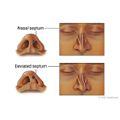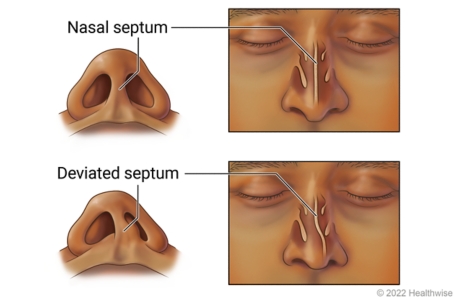Surgery Overview
The nasal septum is the wall between the nostrils that separates the two nasal passages. It supports the nose and directs airflow. The septum is made of thin bone in the back and cartilage in the front. A deviated septum means that the cartilage or bone isn't straight. A crooked septum can make it hard to breathe. It can also lead to snoring and sleep apnea.
The septum can bend to one side or the other as a part of normal growth during childhood and puberty. Also, the septum can be deviated at birth (congenital) or because of an injury, such as a broken nose. Very few people have a perfectly straight septum.
Before surgery, the doctor may use a thin, lighted tool (endoscope) to look at your nasal passages and to see the shape of your septum. In some cases, the endoscope may be used during surgery. You will receive local or general anesthesia for the 60- to 90-minute operation, which is usually done in an outpatient surgery center.
The septum and nasal passages are lined with a layer of soft tissue called the nasal mucosa. To repair the septum, the surgeon works through the nostrils, making an incision to separate the mucosa from the cartilage and bone. The doctor trims or straightens the bent cartilage and then replaces the mucosa over the cartilage and bone.





